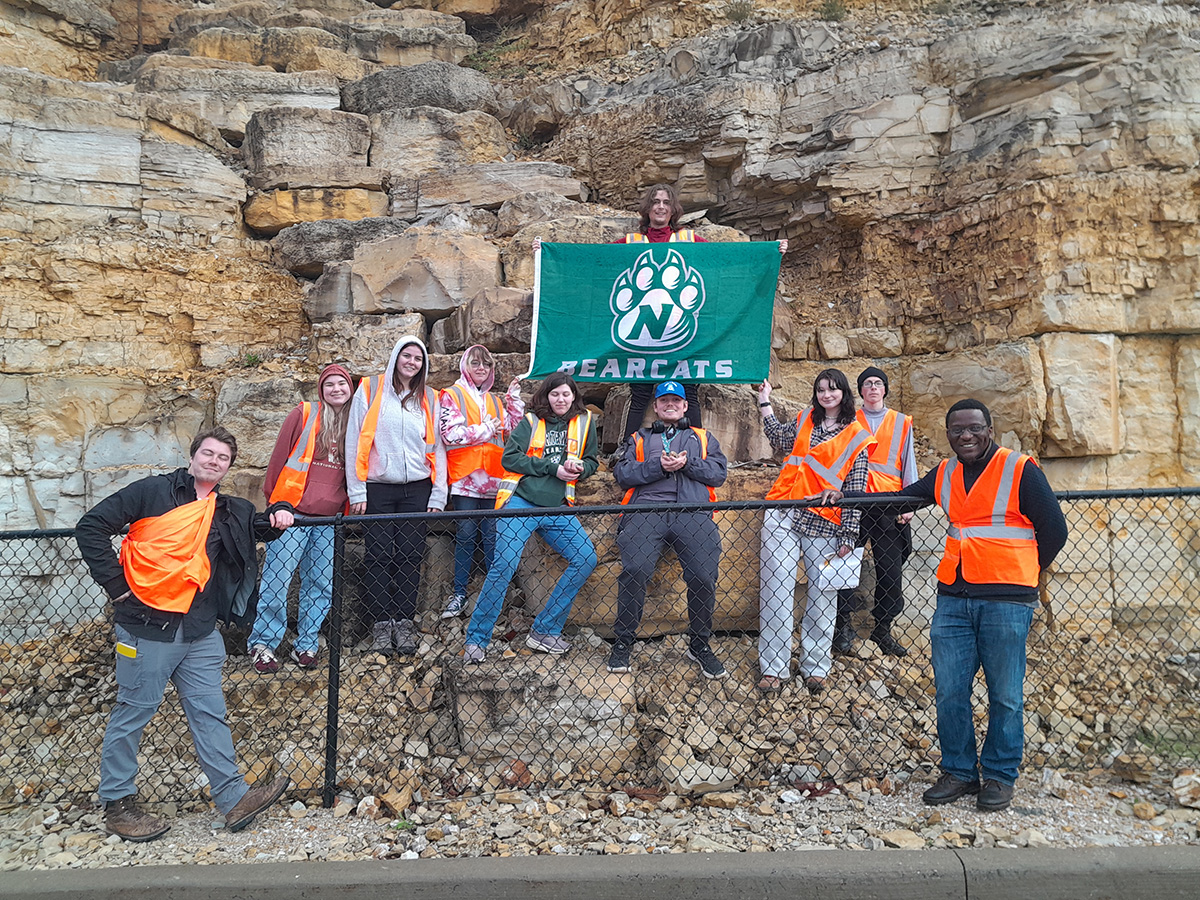
Northwest students and faculty traveled in April to examine relationships in historical geology, paleogeography, igneous basement, metamorphic and sedimentary cover rocks as well as evidence of structural deformation. (Submitted photo)
Northwest Missouri State University geology and biology students this spring visited geological field locations to study fossils, stratigraphic evolution, and sedimentary and igneous rock exposure of southeast Missouri to complement their classroom learning.
Geology faculty Dr. Onema Adojoh and Nathan Limbaugh led students in Northwest’s historical geology and petrology course to Reynold, Phelps, Cole and Jackson counties in Missouri. They visited and studied locations at Elephant Rock State Park, Hughes Mountain Natural Area, Great Unconformity, Western Margin of the Avon Alkaline Igneous Province and Jefferson City Dolomite that host lead-zinc mineralization.
The three-day field trip in April examined relationships in historical geology, paleogeography, igneous basement, metamorphic and sedimentary cover rocks as well as evidence of structural deformation in the state.

During a visit to the Doe Run Company’s Fletcher mine, students saw ways their geology skills can be applied in a career. (Submitted photo)
“By studying the origin of Precambrian and Pennsylvanian rocks, students are armed with new information about the history of fossil-life succession, Earth, tectonics, minerals and geologic structures,” Adojoh said. “They gained a profound understanding of the connection between applied and field-based sciences such as stratigraphy and sedimentation, systematic paleobiology, and depositional system controls.”
The group studied the sequence of the rocks and Earth features dating from 4.5 billion to 323 million years ago, giving students an opportunity to learn how rock and fossil types differ among the counties.
Students also visited the Doe Run Company’s underground Fletcher mine, which extends about 1,000 feet below the Earth’s surface and houses varied types of geologic features and igneous rock structures. There, students interacted with professional geologists and metallurgists and learned about careers in the field.
Further, students visited the Missouri University of Science and Technology’s Mineral Museum, which is one of the largest collections of minerals in the state, and its nearby reconstruction of Stonehenge. Students also studied a collapsed sinkhole caused by a collapsed surface layer due to erosion.